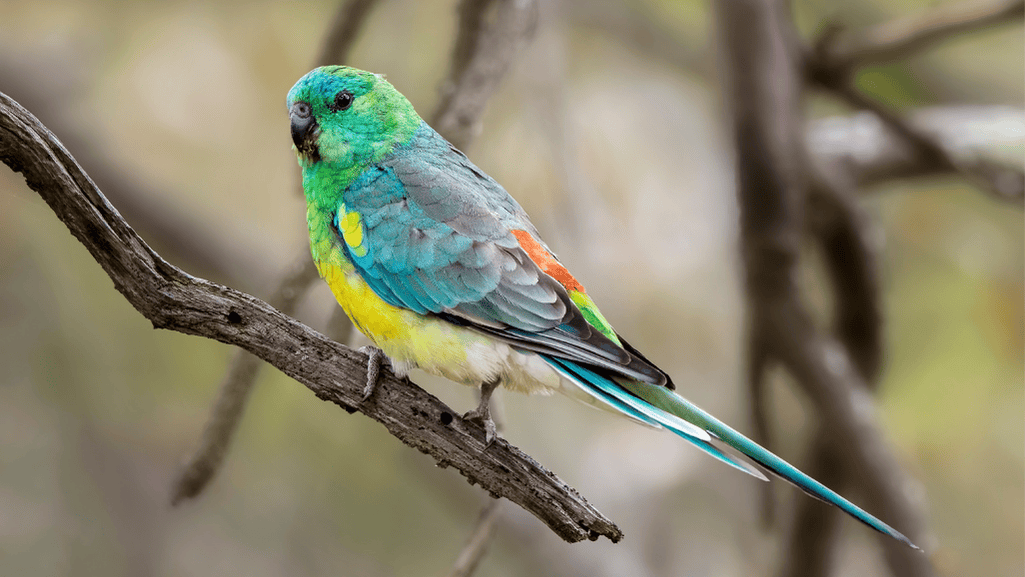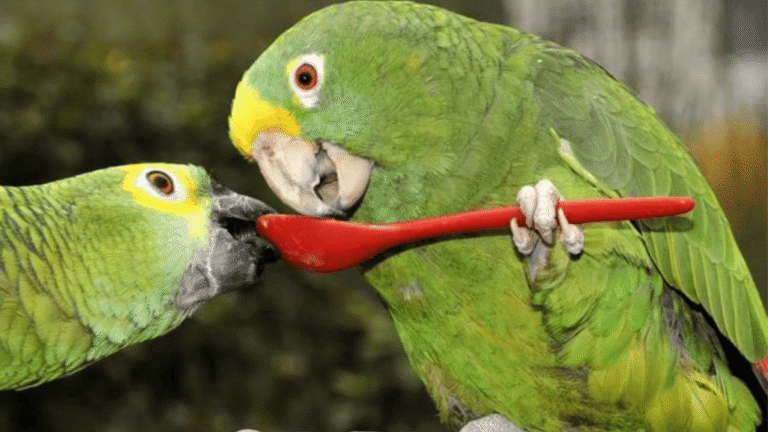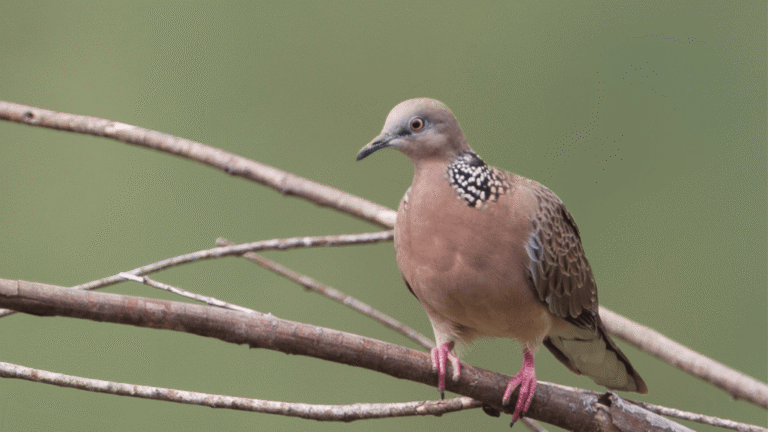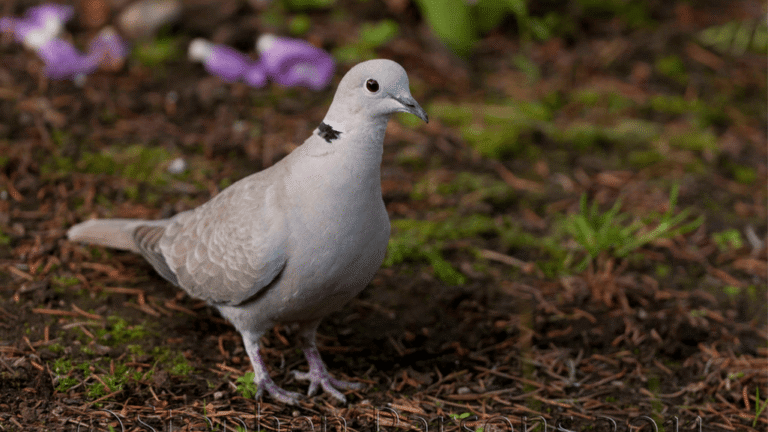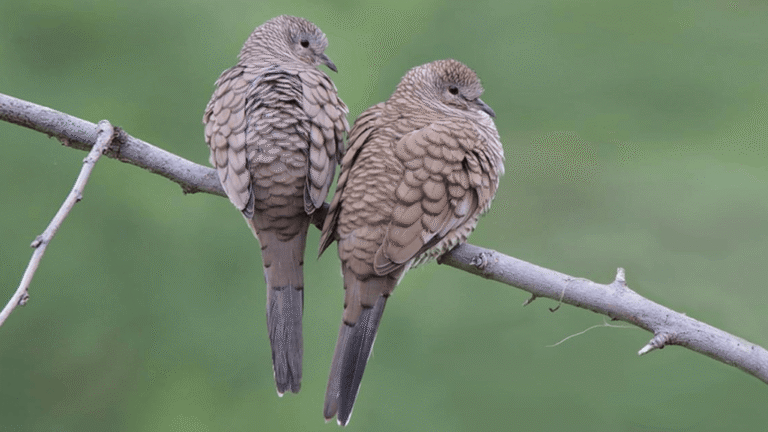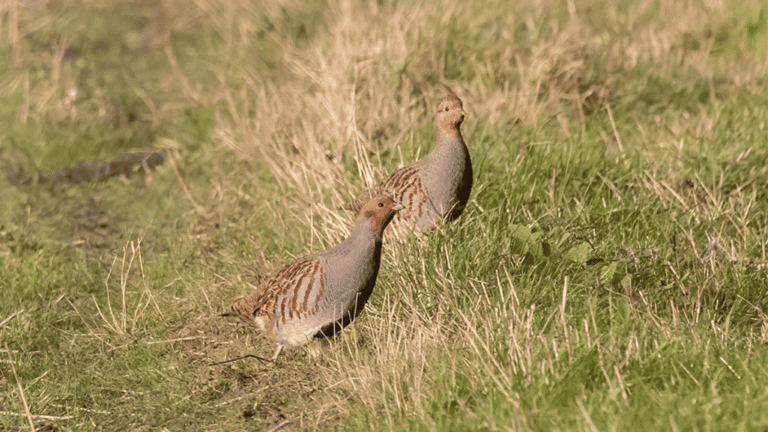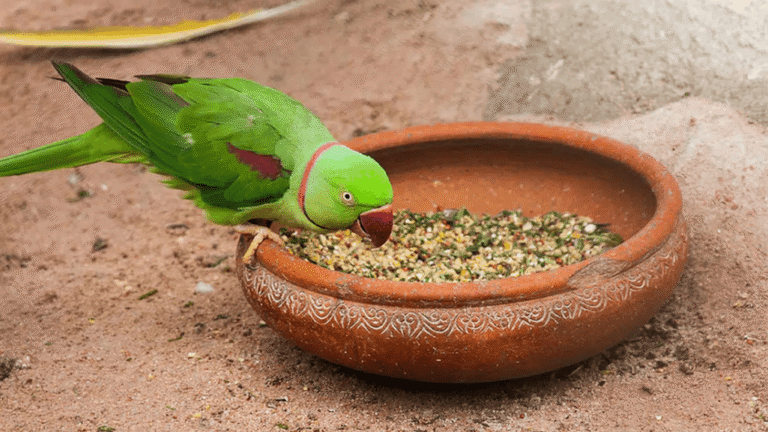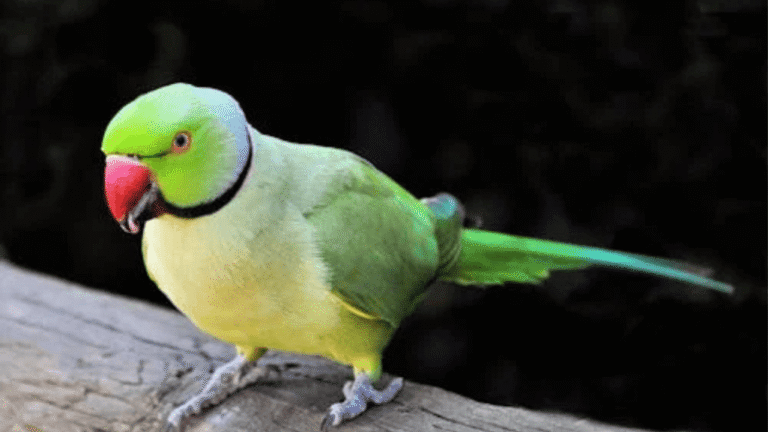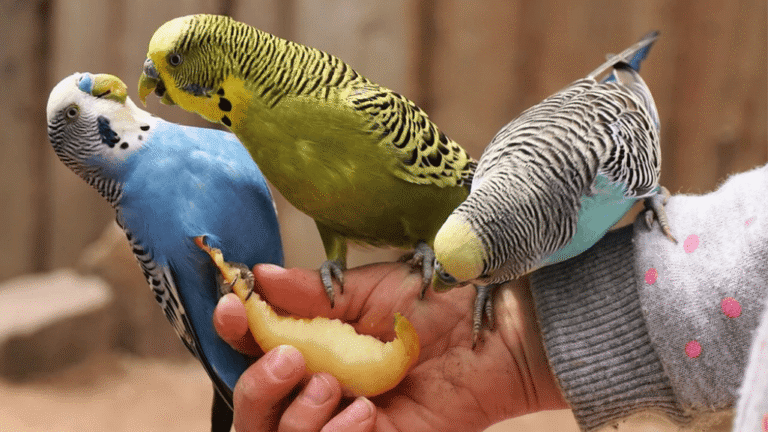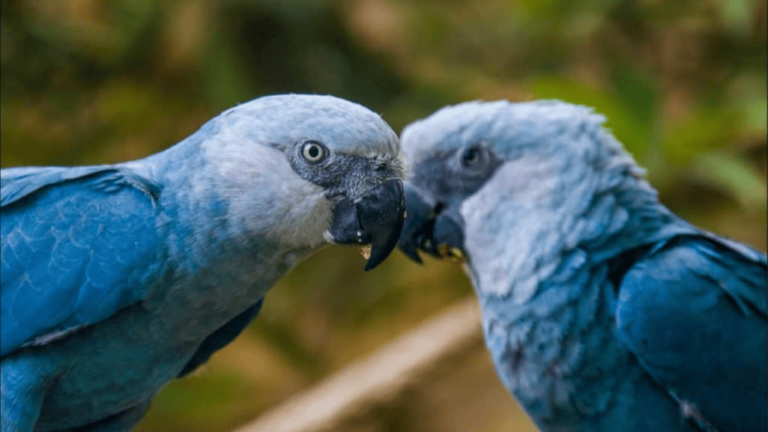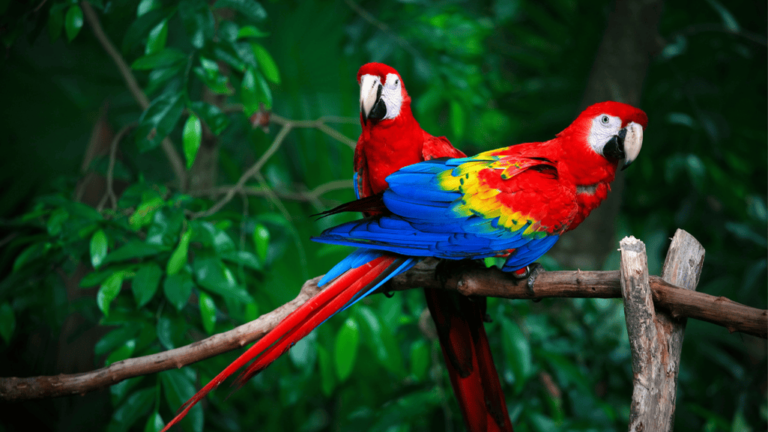The Red-Rumped Parrot is known for its vibrant plumage and joyful presence. It is called Australia’s radiant jewel. This bird is a favorite pet bird and a popular subject for wildlife photography. Its calm nature and stunning looks show the beauty of Australian parrots.
Red-Rumped Parrots are treasures in their natural homes. They add beauty and energy to Australia’s vast landscape. These parakeets attract both bird lovers and casual viewers. They bring peace and beauty to bird-watching and inspire a love for nature worldwide.
Key Takeaways
- Red-Rumped Parrots can live up to 32 years with proper care.
- Choosing the right home and food is key for their health.
- They are known for their soft chirps, creating a calm atmosphere.
- They breed best during rainy seasons, important for breeders.
- Knowing about their care and habitat protection is crucial for their survival.
Discover the Red-Rumped Parrot: Australia’s Avian Delight
The Red-rumped Parrot is a vibrant part of Australia’s bird world. It’s a favorite among bird lovers and scientists. With its bright colors, it’s a joy to watch and study.
Learn more about the Red-rumped Parrot and you’ll see why it’s so special. It’s not just its looks that are interesting, but also its behavior.
These parrots live in open grasslands and parks. They’ve even made homes in suburban areas. You can find them in places like the Grey Box Forest and protected reserves.
Watching a male Red-rumped Parrot is a treat. Its bright red rump and yellow-green feathers are stunning. Its call is easy to recognize, even before you see it.
The female parrots are less colorful, blending into the grasslands. This makes them harder to spot, but just as interesting.
Interacting with these birds is rewarding. You’ll learn about their social lives. They like to gather near water or while looking for food.
But, they can be a bit aggressive at times. This is something birdwatchers find fascinating.
For bird lovers, seeing the Red-rumped Parrot in its natural setting is special. It shows how adaptable they are. This highlights the need to protect their habitats.
Ending a day of birdwatching with a sighting of these colorful parrots is unforgettable. It proves they are a true treasure of Australia’s skies.
The Vibrant Plumage and Coloration of the Red-Rumped Parrot
The Red-Rumped Parrot, known as Psephotus haematonotus, is a stunning colorful parrot. It stands out as one of the most eye-catching exotic birds. This bird is loved for its bright colors and easy care, making it a symbol of Australia’s wild.
Males have emerald-green feathers that look amazing against sunny yellow and a brick-red rump. Their blue wings and back make them a hit in photos and bird identification studies.
Females have softer colors like pale olive and dull green. They also have blue-black wingtips that help them blend in. Even though they’re not as bright, females are still elegant.
- Their red and green feathers help them hide and are key in mating and socializing.
- Because of their stunning looks, they’re a top choice for bird watchers and photographers. This helps us understand Australia’s bird diversity.
Their calls, like “chee chillip” notes, can be heard in open areas and near water. These places are key for their survival and breeding. You can learn more about the Red-Rumped Parrot here.
The Red-Rumped Parrot is loved for its beauty and behavior. It’s important to protect these colorful parrot species. This helps keep the environment balanced and preserves their amazing feathers.
Red-Rumped Parrot Habitat: Thriving in the Australian Wilderness
The red-rumped parrot is a bright spot in the Australian wilderness. They live in many places, from dry lands to green forests. It’s important to keep their homes safe for their survival and growth.
Their home is full of plants and food. This helps not just them but many other birds too. Saving these places helps keep the Australian wilderness beautiful and full of life.
Adapting to Various Ecosystems
Red-rumped parrots are very good at adjusting to different places. They live in many parks and reserves. Each place has its own challenges and chances for them to thrive.
Importance of Preserving Their Natural Habitats
Keeping their homes safe is key to bird conservation. It’s not just about the birds but also the balance of nature in the Australian wilderness. Places where they eat, breed, and socialize are crucial for their life cycle.
Visiting parks known for their beauty and wildlife helps conservation. It’s a way to support efforts like those at Australian Wildlife Journeys.
In summary, the red-rumped parrot’s home shows Australia’s birdlife is strong and beautiful. By caring for these birds and their homes, we ensure future generations can enjoy them too.
Nature’s Melodists: Understanding Red-Rumped Parrot Vocalizations
Exploring parrot vocalization reveals a captivating side of bird behavior, especially in pet parrots like the Red-Rumped Parrot. Their soft chirps and songs make them great pets for those who want a calm companion. The sounds they make show their health and happiness, influenced by their avian diet and surroundings.
Red-Rumped Parrots have unique sounds, from soft chirps to complex melodies. These sounds help them talk to each other and adjust to their homes. This is key for their survival and finding mates.
- The quality and frequency of their sounds can serve as indicators of their health and stress levels.
- An optimal avian diet is crucial as it directly impacts their energy levels and vocal strength.
- Environmental enrichment also plays a vital role in the development of their vocal abilities, mimicking their natural habitats and encouraging typical bird behavior.
The singing of Red-Rumped Parrots is not just for attracting mates or defending territory. It shows their social side. Watching their songs helps us understand their social life and keeps them happy.
Knowing about parrot vocalization and feeding them right can make their lives better. It turns them into happy, singing friends that enjoy being with people.
“Each chirp and whistle is a verse in the symphony of the natural world, reminding us of the intricacy and beauty of avian communication.”
By watching and helping the vocal talents of Red-Rumped Parrots, we help keep their behavior healthy. This caring way makes sure their songs fill our homes with peace and nature’s beauty.
Red-Rumped Parrot Behavior: Social Dynamics and Mating Rituals
Exploring the world of red-rumped parrots reveals their complex social lives and colorful mating rituals. As a key bird species, their social behavior is vital for survival and reproduction in Australia.
Companionship and Territorial Tendencies
Red-rumped parrots show both friendship and fierce territoriality, especially when breeding. Males display their bright colors to attract mates and defend their territories. This territorial behavior is key for red-rumped parrot breeding, ensuring a safe place for young.
While companionship helps in foraging and protection, it also shows the complexity of their social lives. They form close groups but also value their personal space to avoid fights. This balance shows the importance of both social bonds and individual territory.
The Breeding Season and Nesting Habits
After finding a mate, the red-rumped parrot mating rituals begin. These rituals include colorful displays, dances, and songs to strengthen their bond. Choosing the right nesting site is crucial. They pick secluded spots in high places to protect against predators.
Their nesting habits are carefully planned. Both parents work together to build the nest, showing strong cooperation in red-rumped parrot breeding. This teamwork helps ensure the chicks’ survival, helping their species thrive.
Understanding red-rumped parrot behavior, from social interactions to mating rituals, is vital for conservation. It also helps bird lovers and researchers keep their populations healthy in the wild. By learning about their complex behaviors, we can better protect them in their Australian home.
Feeding Habits: What Does a Red-Rumped Parrot Eat?
Knowing what a red-rumped parrot eats is key to keeping them healthy and happy, especially as pets. These colorful birds need a varied diet to stay physically fit and mentally sharp.
The red-rumped parrot’s diet mainly includes grass seeds, common in their Australian homes. In captivity, feeding them this way helps them feel more at home and boosts their health.
- Seeds: They love a mix of seeds like canary seed, millet, oats, buckwheat, safflower, and a bit of sunflower seeds.
- Greens: They need fresh greens like Swiss chard, lettuce, dandelion, and chickweed for vitamins and minerals.
- Pellets and Fresh Foods: A mix of pellets and fresh fruits and veggies is important for a balanced pet bird nutrition.
- Homemade Rearing Food: For breeding parrots, a special food made from egg, whole grain, and carrot is needed for the mom and chicks.
Having a varied avian diet is vital for their health and happiness. Each food item is important, from giving energy for daily activities to building a strong immune system.
By adding different foods, as suggested by bird vets, the bird diet helps them thrive. With proper diet, these birds can show off their bright colors and stay active, signs of good health.
Avian Wellness: Essential Bird Care for Red-Rumped Parrots
Caring for pet parrots, like the red-rumped parrot, is more than just having a friend. It’s a big commitment to their health and happiness. These birds need special care to stay healthy and happy.
Creating a Stimulating Bird Enclosure
The bird enclosure must be big and fun for your red-rumped parrot. It should feel like their natural home. Learning about parrot enclosures is important for their well-being. Here are key things for a great enclosure:
- Size: The cage should be big enough for your parrot to fly around. It should be wide enough for two full wing spans.
- Variety in Perches: Use different types of perches to keep your parrot’s feet healthy and active.
- Toys and Enrichment: Change toys often to keep your parrot busy and active. Puzzle toys are great for their minds.
Regular Health Check-ups and Preventative Care
Regular vet visits are crucial for your parrot’s health. They should check their feathers, weight, and for diseases. A good diet and clean cage help keep them healthy and full of energy.
Following these care tips will make your red-rumped parrots happy and healthy for a long time. A clean, fun bird enclosure and regular health checks are key. Whether you’re new or experienced with birds, knowing their needs is important for their happiness.
Bird Watching and Photography: Capturing the Essence of Red-Rumped Parrots
The mix of wildlife photography and bird watching creates a special art. It shows the beauty of exotic birds like the Red-Rumped Parrot. Taking photos of these colorful parrots in nature is both a sport and an art, making each photo a story of nature.
Photographers aim to show the beauty of these birds in their own way. They use light and shadow to bring out the birds’ bright colors and details. This way, they invite us to see the bird’s life through their photos.
- The right light, especially during the golden hours, makes photos look amazing.
- Modern cameras let us play with depth of field and shutter speeds. This creates stunning photos, whether the bird is still or flying.
- Choosing between a long lens and a telephoto zoom changes how we see the bird. It can make the bird stand out or blend with its surroundings.
Patience is key in wildlife photography. It turns a simple photo into a story. Bird watchers find that waiting for the right moment is part of the calm, meditative process. It’s when a colorful parrot shows off its best.
Embracing both the unpredictability and beauty of nature, the photographer becomes a storyteller, whose lens captures fleeting moments that are as extraordinary as they are ephemeral.
Red-Rumped Parrots in Captivity: A Comprehensive Care Guide
Keeping a red-rumped parrot can be a joy, if you follow a good pet care guide. These birds are lively and fun, and they do well with the right care. This part will cover important red-rumped parrot care topics, like diet and training, to make their lives better.
It’s key to know what different parrot species need, and red-rumped parrots are no different. If you’re thinking about getting one or already have one, here’s a detailed guide to keep your bird happy and healthy.
Optimizing Diets for Captive Birds
For red-rumped parrots to stay healthy and colorful, they need the right bird diet. Their diet should be mostly high-quality pellets, fresh fruits, and veggies, making up 80% of their food. The other 20% should be quality seeds. This mix gives them all the nutrients they need, just like they would eat in the wild.
Creating Bonds Through Interaction and Training
To train a pet bird like a red-rumped parrot, you need to spend time with them and reward them. Training keeps their minds and bodies active and strengthens your bond. Simple tricks like stepping up or coming back to their cage can be learned with treats and praise. Regular practice makes them more responsive and friendly.
Caring for a red-rumped parrot takes commitment and knowledge, aiming to create a natural environment for them. Whether it’s about their diet or training, every effort you make helps them live a healthier, happier life. For more tips, check out our pet care guide.
Conservation Efforts: Protecting the Future of Red-Rumped Parrots
Bird conservation is key to keeping our ecosystems diverse and stable. Red-rumped parrot conservation is especially important. It helps keep this native Australian parrot sustainable. Efforts include saving habitats, educating the public, and protecting wildlife.
Good conservation for red-rumped parrots means protecting their homes and teaching people about them. This helps keep these colorful birds safe in the wild.
“Conservation is not just about saving one species; it’s about ensuring the future of entire ecosystems.”
- Preserving natural habitats through controlled land use and preventing habitat destruction.
- Implementing breeding programs that help increase the populations of the red-rumped parrot.
- Community education and engagement programs that highlight the role of bird conservation in ecological balance.
- Leveraging technology for monitoring species movements and health.
These efforts make red-rumped parrot conservation a big part of environmental talks. They show how important it is to protect wildlife. This way, future generations can enjoy the beauty of biodiversity, including the red-rumped parrot.
Misconceptions and Unknown Facts About Red-Rumped Parrots
In the world of parrot species, the red-rumped parrot stands out. Learning about them clears up myths and highlights their unique traits. This makes us appreciate these colorful Australian birds even more.
Debunking Common Myths
Many think all parrots, like the red-rumped, are loud and messy. But, red-rumped parrots are actually quite calm. This makes them a great choice for homes where quiet is important.
Little-known aspects of their lives
Red-rumped parrots are amazing at adapting to different situations. This skill helps them survive in Australia’s changing landscapes. They are quite different from other parrot species that need specific homes.
These birds eat more than just seeds. They also enjoy fruits, flowers, and insects. This varied diet helps them live well in many places, from dry areas to cities.
This part of the article corrects wrong ideas about red-rumped parrots. It also shows how special their lives are. Whether seen in the wild or kept as pets, these exotic birds amaze people all over the world. They show us the beauty of bird life.
Conclusion
The Red-Rumped Parrot is a stunning bird from Australia’s east and south. It’s known for its bright colors and symbolizes the beauty of Australian wildlife. These birds can live up to 15 years in the wild and 25 in captivity.
They are found in southern Queensland, South Australia, and Tasmania. Bird lovers around the world are fascinated by them. Their long lives show their endurance and beauty.
Keeping Red-Rumped Parrots as pets is rewarding but requires care. They need a diet of seeds, fruits, and insects. Watching them in their natural habitat or in a home shows their social and complex behaviors.
Breeding pairs are very devoted, with 4-6 eggs. They care for their young for 18-21 days. This shows their strong family bonds.
The Red-Rumped Parrot highlights the importance of preserving Australia’s ecosystem. They live in various habitats, like the Grey Box Forest. This shows their adaptability and the need to protect their homes.
For those interested in these birds, learning more about their care is important. It enriches both human and parrot lives. The Red-Rumped Parrot is more than a bird; it’s a symbol of wildlife diversity, inspiring us to care for our world.
Learn more about caring for Red-Rumped Parrots at this link.


